Papers by Giovanni Za
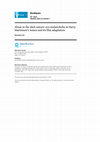
Nordiques, 2024
Epic poem Aniara was published in 1956 by Harry Martinson. Its 2018 film adaptation by Pella Kåge... more Epic poem Aniara was published in 1956 by Harry Martinson. Its 2018 film adaptation by Pella Kågerman and Hugo Lilja contributed to a rediscovery of the original work and ignited further interpretations. Aniara depicts the long ill-fated trip of the eponymous spaceship, which supposedly should have carried thousands of people away from Earth during “a time of calm,
repose and quarantine”. A malfunction knocks Aniara off course and leaves the spacecraft wander towards the limits of both nature’s empty space and humans’ experience. While the epic poem, written in the tension-stricken time of Cold War, pointed at “toxic radiation” as reason for the exile from Earth, the film version focuses on the consequences of climate change. Alone and directionless in a hostile un-nature, humans lack ground. Ghostly images of the environment return in the much alluring pictures broadcasted by Mima – the spaceship controlling machine which offers consolation and an ephemeral nostalgia of lost unity. The aim of this article is to further investigate the consequence of the broken bond between humans and nature in Aniara and provide an ecocritical and posthumanist reading of
Martinson’s and Kågerman/Lilja’s works as a representation of mankind as a peculiar form of lone exobiology adrift in the mute (techno)sphere.
Drammaturgia, Dec 21, 2023

Studi Germanici, 2024
This article aims at analyzing the ways the city of Stockholm has been represented in recent Swed... more This article aims at analyzing the ways the city of Stockholm has been represented in recent Swedish literary production. Drawing from a multidisciplinary reading approach, which takes into consideration interpretations spanning from city planning to architecture, and to political and social sciences in the frame of the history of Stockholm, this research adopts a geocritical methodology, within which space and literature are bonded by mutual influence.
The materials used in this paper span between Per Hagman’s Cigarett (1991; Cigarette, Hagman 2022), Hassan Loo Sattarvandi’s Still (2008; Steady) and include city strategic and urban planning as well as its visions. The interpretation of such diverse evidence reveals how the real and imagined nature of Stockholm, the emerging otherness of periphery in comparison with the city centre, and the productive intersection between Geography and Literature are reaffirmed.
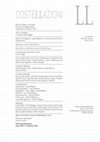
Costellazioni, 2024
With his six volume
autobiography Min kamp (My Struggle), Karl Ove
Knausgård has asserted his s... more With his six volume
autobiography Min kamp (My Struggle), Karl Ove
Knausgård has asserted his stance of putting absolute authenticity against
fiction. In the final book, in the chapter Navnet og tallet (ʺThe name and
the numberʺ), he strays from the autobiographical narration and opens a
narrative space for diverse reflections. There he insists on the power of the
name, which brings truthfulness and strongly connects the bearer to their
identity.
In the following article, I meant to further develop Knausgård’s conclusions
and question his train of thought in relation to autobiography as the power
of identification raised by the proper name fails to establish a connection
between the narrating “I” and a “you”/“other” entity. Following these
speculations, Knausgård’s autobiography appears not to create a
multifaceted/plural perspective and stands as an individual/singular account.
Finally, Knausgård’s Min kamp fails to grasp to an outright authenticity
and emerges as just another piece of fiction.
NuBE - Nuova Biblioteca Europea, 2023
Le opere dello scrittore svedese Mikael Niemi si estendono negli ultimi decenni tra poesia, lette... more Le opere dello scrittore svedese Mikael Niemi si estendono negli ultimi decenni tra poesia, letteratura per ragazzi, romanzo storico e di formazione, giallo e distopia. Tra questi generi, si sceglie qui di analizzare in particolare i romanzi per ragazzi
ECHO - Rivista interdisciplinare di Comunicazione, Linguaggi, Culture, Società, 2023
La ricostruzione dello spazio urbano di Stoccolma, realizzata in più tappe tra fine Ottocento e s... more La ricostruzione dello spazio urbano di Stoccolma, realizzata in più tappe tra fine Ottocento e secondo dopoguerra, ha ampiamente ridefinito i perimetri materiali ed immateriali della città e posto in una prospettiva critica l'eredità architettonica e antropologica del passato. La realizzazione del progetto sociale di folkhem ("casa del popolo"), a partire dagli anni Trenta del Novecento, ha contribuito significativamente a una riprogettazione degli spazi pubblici e alla definizione di una nuova identità, in cui la memoria e le tradizioni architettoniche-il nucleo stesso della città-sono state considerate come irrecuperabili alla realizzazione di un ideale urbanistico funzionale e modernista.
Rethinking Space through Literary Form a cura di Rupsa Banerjee e Nathaniel Cadle
Annali di Ca’ Foscari. Serie occidentale
Recensione di: Banerjee, R.; Cadle, N. (eds) (2022). Rethinking Space through Literary Form. Cham... more Recensione di: Banerjee, R.; Cadle, N. (eds) (2022). Rethinking Space through Literary Form. Cham: Palgrave Macmillan, 284 pp.

Studi Germanici, 2021
Ingmar Bergman’s latest films and works have generally been considered an example of ‘late work’,... more Ingmar Bergman’s latest films and works have generally been considered an example of ‘late work’, as in the definition provided by Edward W. Said, according to whom some critical feedback seems to connect bodily conditions with aesthetic style. Fanny and Alexander has been considered Bergman’s ‘last film’, although other films have been produced afterwards – involving sketches of a conclusive auto- biographical statement about his experience of life and art, further exploited in later literary works. The core content of the film gave the director the chance to piece together childhood memories and a personal view of the power of artistic creation. This has therefore led critics and scholars to acknowledge a mostly autobiography- orientated interpretation, also encouraged by the director himself, while some elements in both films and novels hint at a different con- clusion. The main focus for this research is to further investigate the autobiographical content in Bergman’s later work and have a closer look at the significant differences that arise between the director’s actual chronicle and the artistic narration found in his oeuvre.
Conference Presentations by Giovanni Za
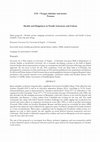
Health and Happiness in Nordic Literature and Culture - UiT - Norges Arktiske universitet Tromsø, 2023
Space and place as literary categories play a significant role in Jonas Gardell’s trilogy Torka a... more Space and place as literary categories play a significant role in Jonas Gardell’s trilogy Torka aldrig tårar utan handskar (Gardell 2012-3) and in its television adaptation (Kaijser 2012). According to Yi-Fu Tuan’s classical definition, space is characterized by “openness and freedom” (Tuan 1977, 6), while place is “the organized world of meaning” (Tuan 1977, 179): in the peculiar cityscape of Stockholm in early 1980s, the plot describes the life-changing encounter of Benjamin, a Jehovah’s witness at loss with his identity and spirituality, and Rasmus, a young student from Värmland also looking for his true self. The small community they shape with fellow friends/outsiders challenges the visible edgings that normativity has erected and creates places as temporary autonomous zones (Bey 1985), as well as peculiar heterotopias (Foucault 1986) within city-borders. Benjamin, Rasmus and their group are eventually hit when AIDS spreads in the capital city and confined in the oppressive space of sickness, interpreted by media attention as a form of punishment. Illness plays a significant role in shaping new boundaries within society as it appears not only to affect people, but also signifies an actual division between normativity and non-conformity. That border is ultimately trespassed by resilient and survivor Benjamin, in the last sequence, some 20 years after the events.
The aim of this proposal is to investigate how illness, inclusion, happiness and non-normativity unfold in these distinctive pieces of literature/television and how space mirrors the sharp fragments of a broken social system.
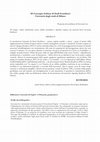
XI Convegno Italiano di Studi Scandinavi Università degli studi di Milano, 2023
La produzione letteraria di Jonas Karlsson-autore, regista teatrale e attore-pone al centro della... more La produzione letteraria di Jonas Karlsson-autore, regista teatrale e attore-pone al centro della rappresentazione l'ecfrasi di spazi esterni o interni, immaginari, concreti o metaforici. Il teatro sospeso in aria di Utgången (Karlsson 2012; L'uscita) rimanda infatti sia a echi di passaggi letterari lontani (il castello crescente strindberghiano) sia, ironicamente, allo stato di sospensione del protagonista, attore che non conosce le battute e le cui opaca identità si smarrisce nel gioco di specchi tra il fioco sé, il pubblico e i colleghi sul palcoscenico. Prima bloccato nella sua fuga dall'affollata scala verso l'uscita-impedimento architettonico e metafisico verso la liberazione-infine ritrova la su identità in una via di uscita a caduta verticale. Altrove le caratterizzazioni dello spazio appaiono egualmente significative, sia nel dittico Min kompis på Gondolen (Karlsson 2007; Il mio amico a La Gondola)-ove la sospensione dell'edificio riflette l'inafferrabilità dell'io e dell'identità aeriforme-, sia nel romanzo breve Rummet (Karlsson 2009; La stanza; anche traducibile con "Lo spazio"), ove l'interno di un ufficio pubblico trasforma le sue coordinate e modifica le sue dimensioni plastiche a seconda dell'osservatore. Qui lo spazio cessa di essere luogo concreto o architettura tangibile e diviene invece prodotto sociale (Lefebvre 1981), costruito dalla pratica quotidiana, non più materia, ma immaginazione: in tale transizione si specchia lo smarrimento dell'io, che, infine, giunge nella sua definizione ultima di inconsistenza nel racconto Ingenting (Karlsson 2015; Niente).
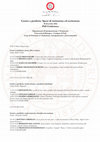
La proposta di ricerca contribuisce al dibattito critico sulla rappresentazione letteraria dello... more La proposta di ricerca contribuisce al dibattito critico sulla rappresentazione letteraria dello spazio urbano di Stoccolma negli ultimi decenni. Il tema ha acquisito notevole importanza anche per la recente nouvelle vague di voci letterarie, che ha assegnato ruolo di rilievo allo spazio suburbano e alle linee interrotte di comunicazione tra questo e la città: in tale produzione, la dicotomia centro-periferia, la formazione di micro-realtà segregate (Magnusson 2001; Molina 2001; Nilsson 2010), la scomparsa di una visione ontologicamente omogenea dell’identità cittadina (Wistisen 2017) mostrano le aporie del progetto di rinnovamento della capitale.
Obiettivo di questa proposta è pertanto ricostruire il filo della trasformazione urbana di Stoccolma, saldando in un discorso interdisciplinare letteratura, architettura, storia, antropologia, economia e geografia. La metodologia geocritica (Westphal 2007) e i modelli analitici della poetica dello spazio (Bachelard 1975; Deleuze, Guattari 2017), qui adoperati, permettono di tracciare un quadro articolato, in cui il centro risulta oggetto di un processo di rinnovamento e ristrutturazione – che muta le funzioni antropologiche dell’area (Gullberg 2001) e genera forme concorrenti di esclusione e disidentità –, mentre la periferia appare progetto sociale i cui esiti falliscono gli obiettivi di inclusione e sicurezza. Nelle aree decentrate prendono forma le esperienze dei protagonisti di Det sista ljuset (Kallifatides 1995; L’ultima luce) e Still (Sattarvandi 2008; Fermo), che vivono la condizione di immigrazione e peripherality (Ameel, Finch, Salmela 2015) ora come alterità reattiva, altrove come nera emarginazione e irrecuperabile isolamento; per converso, nel centro anti-identitario e derealizzato (Culler 2002) si svolgono Sveas son (Andersson 2018; Il figlio di Svea) e Cigarett (Hagman 1991; Sigaretta). Emergono, nell’analisi conclusiva, un centro e una periferia legati da una comune mancanza di identità: questa appare scenario di marginalità privo di storia, laddove quello si trova adattato a logiche commerciali tardo-capitalistiche; entrambe falliscono al tentativo di costituire un riconoscibile dasein.
Book Reviews by Giovanni Za
Annali di Ca’ Foscari. Serie occidentale, 2023
Recensione di Banerjee, R.; Cadle, N. (eds) (2022). Rethinking Space through Literary Form. Cham:... more Recensione di Banerjee, R.; Cadle, N. (eds) (2022). Rethinking Space through Literary Form. Cham: Palgrave Macmillan, 284 pp.
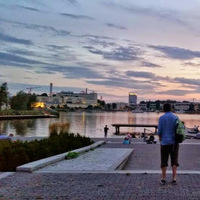

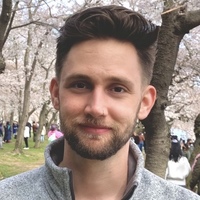

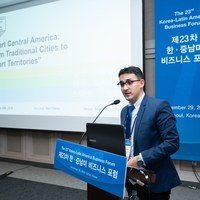
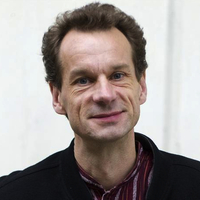
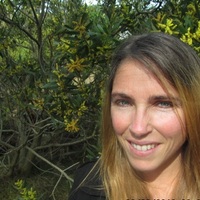



Uploads
Papers by Giovanni Za
repose and quarantine”. A malfunction knocks Aniara off course and leaves the spacecraft wander towards the limits of both nature’s empty space and humans’ experience. While the epic poem, written in the tension-stricken time of Cold War, pointed at “toxic radiation” as reason for the exile from Earth, the film version focuses on the consequences of climate change. Alone and directionless in a hostile un-nature, humans lack ground. Ghostly images of the environment return in the much alluring pictures broadcasted by Mima – the spaceship controlling machine which offers consolation and an ephemeral nostalgia of lost unity. The aim of this article is to further investigate the consequence of the broken bond between humans and nature in Aniara and provide an ecocritical and posthumanist reading of
Martinson’s and Kågerman/Lilja’s works as a representation of mankind as a peculiar form of lone exobiology adrift in the mute (techno)sphere.
The materials used in this paper span between Per Hagman’s Cigarett (1991; Cigarette, Hagman 2022), Hassan Loo Sattarvandi’s Still (2008; Steady) and include city strategic and urban planning as well as its visions. The interpretation of such diverse evidence reveals how the real and imagined nature of Stockholm, the emerging otherness of periphery in comparison with the city centre, and the productive intersection between Geography and Literature are reaffirmed.
autobiography Min kamp (My Struggle), Karl Ove
Knausgård has asserted his stance of putting absolute authenticity against
fiction. In the final book, in the chapter Navnet og tallet (ʺThe name and
the numberʺ), he strays from the autobiographical narration and opens a
narrative space for diverse reflections. There he insists on the power of the
name, which brings truthfulness and strongly connects the bearer to their
identity.
In the following article, I meant to further develop Knausgård’s conclusions
and question his train of thought in relation to autobiography as the power
of identification raised by the proper name fails to establish a connection
between the narrating “I” and a “you”/“other” entity. Following these
speculations, Knausgård’s autobiography appears not to create a
multifaceted/plural perspective and stands as an individual/singular account.
Finally, Knausgård’s Min kamp fails to grasp to an outright authenticity
and emerges as just another piece of fiction.
Conference Presentations by Giovanni Za
The aim of this proposal is to investigate how illness, inclusion, happiness and non-normativity unfold in these distinctive pieces of literature/television and how space mirrors the sharp fragments of a broken social system.
Obiettivo di questa proposta è pertanto ricostruire il filo della trasformazione urbana di Stoccolma, saldando in un discorso interdisciplinare letteratura, architettura, storia, antropologia, economia e geografia. La metodologia geocritica (Westphal 2007) e i modelli analitici della poetica dello spazio (Bachelard 1975; Deleuze, Guattari 2017), qui adoperati, permettono di tracciare un quadro articolato, in cui il centro risulta oggetto di un processo di rinnovamento e ristrutturazione – che muta le funzioni antropologiche dell’area (Gullberg 2001) e genera forme concorrenti di esclusione e disidentità –, mentre la periferia appare progetto sociale i cui esiti falliscono gli obiettivi di inclusione e sicurezza. Nelle aree decentrate prendono forma le esperienze dei protagonisti di Det sista ljuset (Kallifatides 1995; L’ultima luce) e Still (Sattarvandi 2008; Fermo), che vivono la condizione di immigrazione e peripherality (Ameel, Finch, Salmela 2015) ora come alterità reattiva, altrove come nera emarginazione e irrecuperabile isolamento; per converso, nel centro anti-identitario e derealizzato (Culler 2002) si svolgono Sveas son (Andersson 2018; Il figlio di Svea) e Cigarett (Hagman 1991; Sigaretta). Emergono, nell’analisi conclusiva, un centro e una periferia legati da una comune mancanza di identità: questa appare scenario di marginalità privo di storia, laddove quello si trova adattato a logiche commerciali tardo-capitalistiche; entrambe falliscono al tentativo di costituire un riconoscibile dasein.
Book Reviews by Giovanni Za
repose and quarantine”. A malfunction knocks Aniara off course and leaves the spacecraft wander towards the limits of both nature’s empty space and humans’ experience. While the epic poem, written in the tension-stricken time of Cold War, pointed at “toxic radiation” as reason for the exile from Earth, the film version focuses on the consequences of climate change. Alone and directionless in a hostile un-nature, humans lack ground. Ghostly images of the environment return in the much alluring pictures broadcasted by Mima – the spaceship controlling machine which offers consolation and an ephemeral nostalgia of lost unity. The aim of this article is to further investigate the consequence of the broken bond between humans and nature in Aniara and provide an ecocritical and posthumanist reading of
Martinson’s and Kågerman/Lilja’s works as a representation of mankind as a peculiar form of lone exobiology adrift in the mute (techno)sphere.
The materials used in this paper span between Per Hagman’s Cigarett (1991; Cigarette, Hagman 2022), Hassan Loo Sattarvandi’s Still (2008; Steady) and include city strategic and urban planning as well as its visions. The interpretation of such diverse evidence reveals how the real and imagined nature of Stockholm, the emerging otherness of periphery in comparison with the city centre, and the productive intersection between Geography and Literature are reaffirmed.
autobiography Min kamp (My Struggle), Karl Ove
Knausgård has asserted his stance of putting absolute authenticity against
fiction. In the final book, in the chapter Navnet og tallet (ʺThe name and
the numberʺ), he strays from the autobiographical narration and opens a
narrative space for diverse reflections. There he insists on the power of the
name, which brings truthfulness and strongly connects the bearer to their
identity.
In the following article, I meant to further develop Knausgård’s conclusions
and question his train of thought in relation to autobiography as the power
of identification raised by the proper name fails to establish a connection
between the narrating “I” and a “you”/“other” entity. Following these
speculations, Knausgård’s autobiography appears not to create a
multifaceted/plural perspective and stands as an individual/singular account.
Finally, Knausgård’s Min kamp fails to grasp to an outright authenticity
and emerges as just another piece of fiction.
The aim of this proposal is to investigate how illness, inclusion, happiness and non-normativity unfold in these distinctive pieces of literature/television and how space mirrors the sharp fragments of a broken social system.
Obiettivo di questa proposta è pertanto ricostruire il filo della trasformazione urbana di Stoccolma, saldando in un discorso interdisciplinare letteratura, architettura, storia, antropologia, economia e geografia. La metodologia geocritica (Westphal 2007) e i modelli analitici della poetica dello spazio (Bachelard 1975; Deleuze, Guattari 2017), qui adoperati, permettono di tracciare un quadro articolato, in cui il centro risulta oggetto di un processo di rinnovamento e ristrutturazione – che muta le funzioni antropologiche dell’area (Gullberg 2001) e genera forme concorrenti di esclusione e disidentità –, mentre la periferia appare progetto sociale i cui esiti falliscono gli obiettivi di inclusione e sicurezza. Nelle aree decentrate prendono forma le esperienze dei protagonisti di Det sista ljuset (Kallifatides 1995; L’ultima luce) e Still (Sattarvandi 2008; Fermo), che vivono la condizione di immigrazione e peripherality (Ameel, Finch, Salmela 2015) ora come alterità reattiva, altrove come nera emarginazione e irrecuperabile isolamento; per converso, nel centro anti-identitario e derealizzato (Culler 2002) si svolgono Sveas son (Andersson 2018; Il figlio di Svea) e Cigarett (Hagman 1991; Sigaretta). Emergono, nell’analisi conclusiva, un centro e una periferia legati da una comune mancanza di identità: questa appare scenario di marginalità privo di storia, laddove quello si trova adattato a logiche commerciali tardo-capitalistiche; entrambe falliscono al tentativo di costituire un riconoscibile dasein.